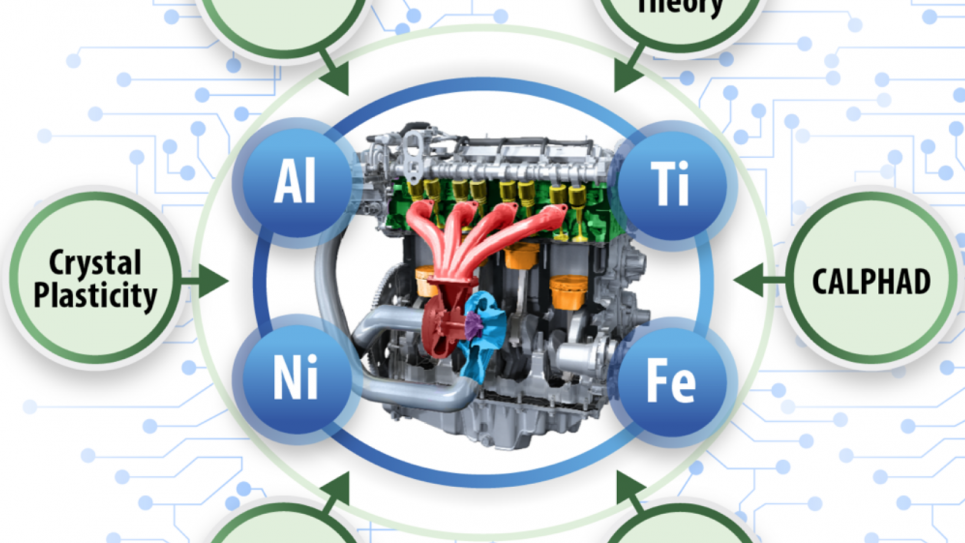
Automotive high-temperature alloy design. Image: Dongwon Shin, Oak Ridge National Laboratory
This project will heavily exploit the GPU-capability of OLCF’s Summit for atomistic simulations and microstructure evolution software, which have proven to be highly efficient. Alloy design expertise and advanced characterization across multiple DOE national laboratories will actively support the proposed HPC ICME tasks. The outcome of this project is anticipated to fill critical knowledge gaps and shorten the timeframe from prototype automotive high-temperature alloys to their real-world deployment.
ORNL recently designed a new family of advanced higher-temperature Al-Cu alloys for automotive cylinder heads at an unprecedented pace (4 years from alloy concept to full engine testing). The accelerated development strategy significantly benefited from massively parallel atomistic calculations and microstructure simulations performed on at Oak Ridge Leadership Computing Facilities. DOE/EERE-VTO intends to extend the recent success by exploiting a suite of state-of-the-art ICME software packages (i.e., density functional theory, CALPHAD, phase-field, crystal plasticity, reactive force field, and machine learning) to accelerate the design of various classes of high-temperature alloys (i.e., Al-, Fe-, Ni- and Ti-alloys). This project will heavily exploit the GPU-capability of OLCF’s Summit for atomistic simulations (VASP and LAMMPS) and microstructure evolution software (ORNL’s in-house code), which have proven to be highly efficient. ORNL’s world-class alloy design expertise and advanced characterization across multiple DOE national laboratories will actively support the proposed HPC ICME tasks. The outcome of this project is anticipated to fill critical knowledge gaps and shorten the timeframe from prototype automotive high-temperature alloys to their real-world deployment.